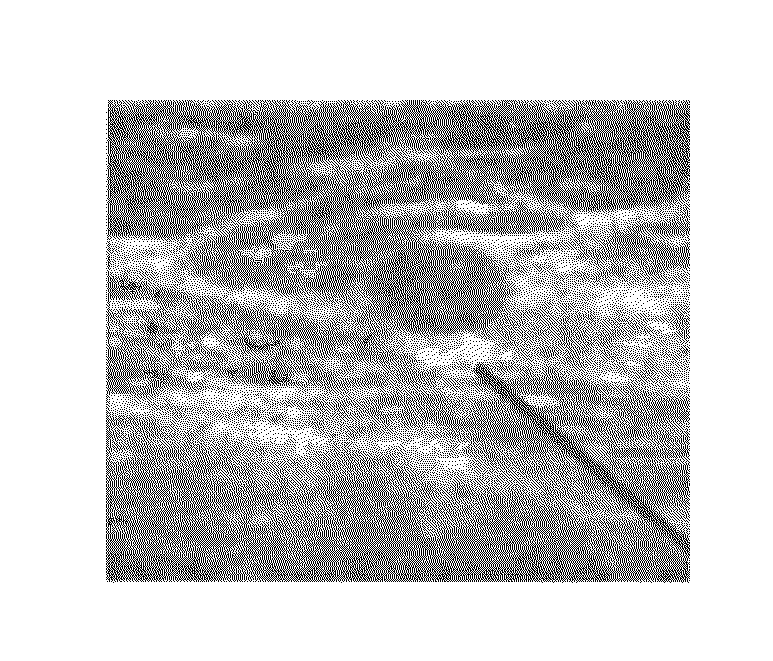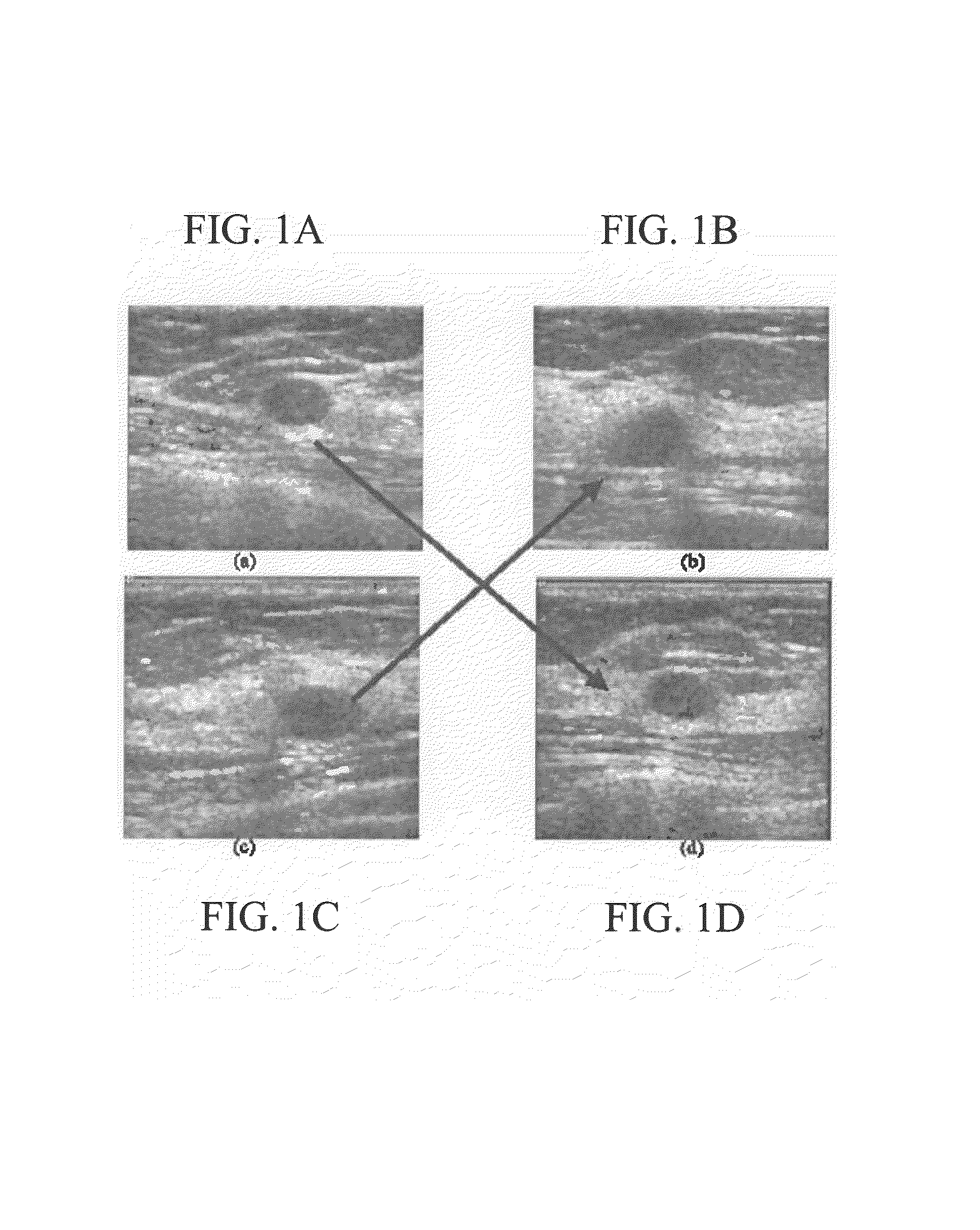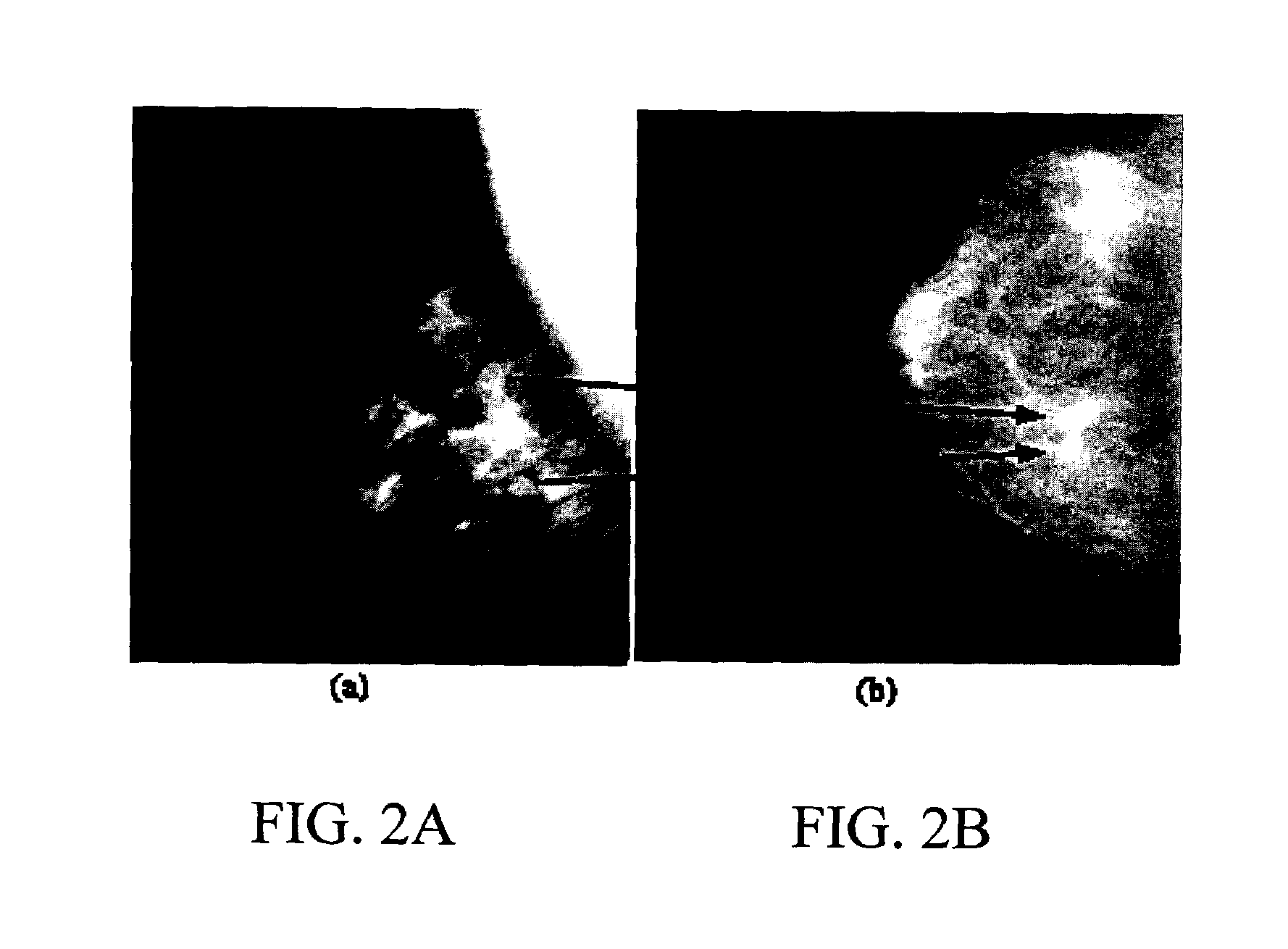Method, system, and computer software product for feature-based correlation of lesions from multiple images
a technology of multiple images and features, applied in the field of feature-based correlation of lesions from multiple images, can solve the problems of not being able to represent the totality of the lesions on all images obtained in a study, requiring considerable expertise and experience, and comparing multiple breast images is a difficult task, so as to facilitate the identification of incorrectly matched lesions, improve and improve the effect of diagnostic accuracy and overall patient outcom
- Summary
- Abstract
- Description
- Claims
- Application Information
AI Technical Summary
Benefits of technology
Problems solved by technology
Method used
Image
Examples
Embodiment Construction
[0065]The aforementioned difficulties are mitigated by using image features associated with the lesions and developing a classification scheme for establishing lesion correspondence. That is, given two breast images, lesions are first automatically segmented from the surrounding breast tissues and a set of features (feature vector) is automatically extracted from each identified lesion. Subsequently, for every two indicated lesions that are not in the same image, a classifier will examine their features and yield the likelihood that the two lesions correspond to the same physical lesion.
[0066]Image features produced by automatic segmentation that have been successful in developing computer-aided diagnosis (CAD) of breast cancers are also useful for the task of lesion matching. An appropriate subset of features useful for discriminating corresponding and non-corresponding lesion pairs will need to be determined. The features will then be used to develop discrimination methods for aut...
PUM
 Login to View More
Login to View More Abstract
Description
Claims
Application Information
 Login to View More
Login to View More - R&D
- Intellectual Property
- Life Sciences
- Materials
- Tech Scout
- Unparalleled Data Quality
- Higher Quality Content
- 60% Fewer Hallucinations
Browse by: Latest US Patents, China's latest patents, Technical Efficacy Thesaurus, Application Domain, Technology Topic, Popular Technical Reports.
© 2025 PatSnap. All rights reserved.Legal|Privacy policy|Modern Slavery Act Transparency Statement|Sitemap|About US| Contact US: help@patsnap.com



